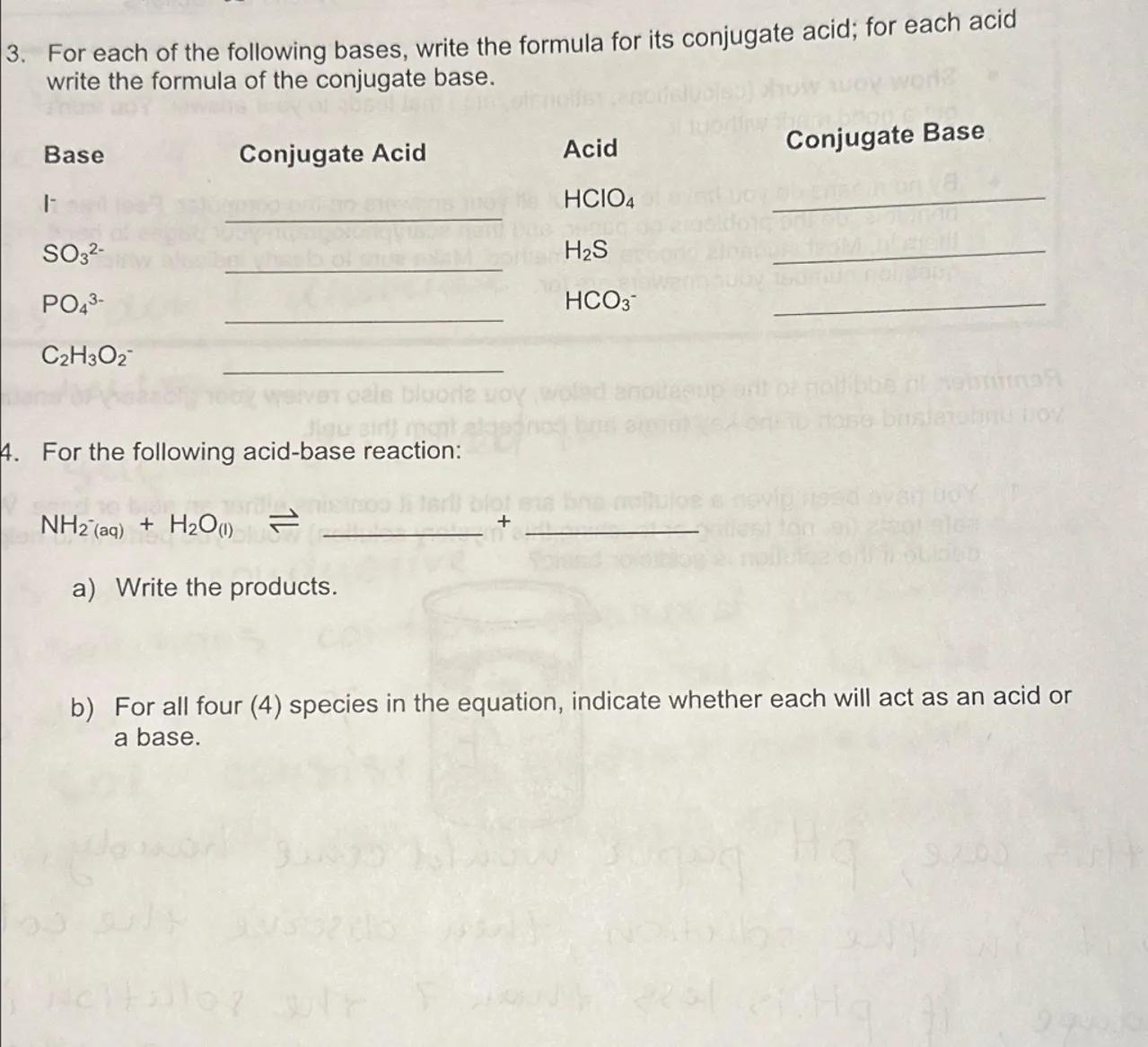
Sia
3. For each of the following bases, write the formula for its conjugate acid; for each acid write the formula of the conjugate base.
\begin{tabular}{llll}
Base & Conjugate Acid & Acid & Conjugate Base \\
& & \\
& & & \\
& & & \\
\cline { 2 - 2 } & & &
\end{tabular}
4. For the following acid-base reaction:
a) Write the products.
b) For all four (4) species in the equation, indicate whether each will act as an acid or a base.

Answer from Sia
Posted over 1 year ago
Solution
1
Conjugate Acid of I-: To find the conjugate acid of a base, add a proton (H⁺) to the base. For the iodide ion, , the conjugate acid is
2
Conjugate Acid of \( \mathrm{SO}_{3}^{2-} \): Similarly, adding a proton to the sulfite ion, , gives the conjugate acid
3
Conjugate Acid of \( \mathrm{PO}_{4}^{3-} \): Adding a proton to the phosphate ion, , results in the conjugate acid
4
Conjugate Base of \( \mathrm{HClO}_{4} \): Removing a proton from perchloric acid, , gives the conjugate base
5
Conjugate Base of \( \mathrm{H}_{2}S \): Removing a proton from hydrogen sulfide, , gives the conjugate base
6
Conjugate Base of \( \mathrm{HCO}_{3}^{-} \): Removing a proton from bicarbonate ion, , gives the conjugate base
7
Conjugate Base of \( \mathrm{C}_{2}\mathrm{H}_{3}\mathrm{O}_{2}^{-} \): Since acetate ion, , is already a base, its conjugate acid would be acetic acid, . However, this is not part of the table, so we do not need to find its conjugate base
8
Products of the Reaction: The reaction between and produces and
9
Acid or Base Identification: In the reaction, acts as a base by accepting a proton from , which acts as an acid. The products and are the conjugate acid and base, respectively
3 Answer
Conjugate acids: , ,
Conjugate bases: , ,
4 Answer
Products: ,
Acid/Base Identification: (base), (acid), (acid), (base)
Key Concept
Conjugate acids and bases are pairs that differ by one proton. In a reaction, the acid donates a proton, and the base accepts a proton.
Explanation
The conjugate acid of a base is formed by adding a proton to the base, while the conjugate base of an acid is formed by removing a proton from the acid. In the given acid-base reaction, ammonia acts as a base and water as an acid, resulting in ammonium and hydroxide ions.
Not the question you are looking for? Ask here!
Enter question by text
Enter question by image
Unlock Smarter Learning with AskSia Super!
Join Super, our all-in-one AI solution that can greatly improve your learning efficiency.
30% higher accuracy than GPT-4o
Entire learning journey support
The most student-friendly features
Study Other Question
